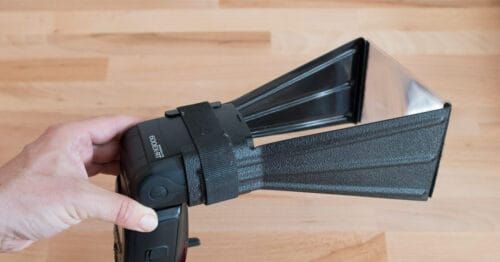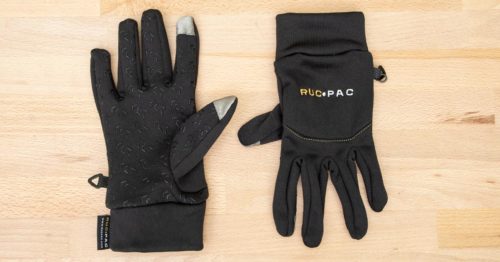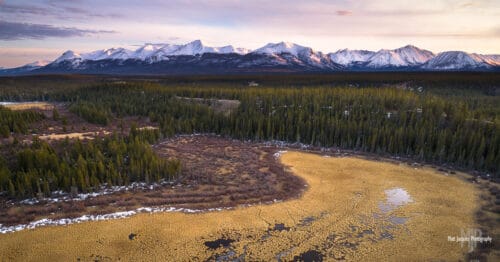When I’m packing for a wildlife photography trip I always take at least a couple of extenders (teleconverters) with me, usually a 1.4x and a 2x. Amongst some people, extenders have a bit of a bad reputation. People will say (usually on internet forums) that you can’t get sharp images with an extender, or that autofocus becomes unusable. And yet somehow I consistently manage to get great results with mine… how strange!
The fact is that these people simply don’t know how to use extenders correctly. I’ve written extensively before about the best practices for using extenders, so if you’re entirely unfamiliar with them then that is a good companion piece to this one. In this post I’m not going to talk about the technical stuff because I’ve covered that in the other article. This time I want to let the images do a bit more of the talking, and also discuss the real benefits of extenders aside from them just giving you a longer focal length. Yes, they certainly do give you more zoom, but how can that be useful? And how can you best use that for wildlife photography?
The three images in this article were all taken during the same encounter with this black bear on the Pacific coast of British Columbia, Canada. For further context, they were taken from a zodiac boat, the camera was a Canon 5D Mark IV and the lens was the Canon 400mm f/4 DO IS II. One image was just the bare lens, one image used the Canon EF 1.4x III Extender and one image used the Canon EF 2x III Extender. All three photos were taken within a 2-minute timeframe.
On this trip I was really focussed on capturing the unique coastal environment of these black bears, along with their interesting dietary habits. Most people imagine bears eating grass, not crabs, mussels and barnacles! Capturing unique behavioural photos is a tough challenge, though. It takes time, and perseverance.
This bear was wandering down the rocky shore, flipping over rocks on the beach to look for crabs. By this point in the trip, I already had many photos of that behaviour and I was really hoping to get something more unique. At one point, my boat captain pointed out that the bear was approaching a fallen tree that had been uncovered by the low tide. My heart immediately began to beat a little faster because I knew that there was a good chance that the bear would, at the very least, raise his head to eat some of the barnacles off the log. I had witnessed this behaviour before from a great distance, but this time I thought I might be within a good range to capture it.
Since this had the potential to be a much more unique photo, I quickly prepared my gear. I pulled out both extenders, removed the front and rear caps and placed them carefully in an open camera bag on my lap so that I could reach them in an instant. Then I double checked my ISO and because I was on the water, I triple checked my shutter speed because the movement of the boat requires the use of a faster-then-normal shutter to get a sharp image.
I was ready.
As soon as the bear reached the fallen tree it began to sniff it and stand up. As luck would have it, the bear was also facing in the direction of our boat! It was about as perfect as you could imagine, and I was even able to use the barnacle-covered protruding branches to frame the bear for a lovely composition. After shooting for a few seconds at 400mm, I then shot for a few seconds with each of the two different extenders to get images at 560mm and 800mm.
When you know you’re shooting a unique moment, there’s always the fear that you’ll miss something when you stop to switch or add an extender. It’s definitely a possibility, but in my experience I’ve always been pleased enough with the results that I think it’s worth the risk if you can pre-visualize the image you really want to get with that increased focal length. Note that I’m not saying you should always use your extenders! Far from it. You must be able to visualize the photo you want to get with that new, longer focal length. If you can do that, then you can quickly decide if it’s worth taking that risk.
The reason I love to carry extenders with me is that I can quickly create a variety of different compositions when I’m in a situation that doesn’t allow me to control my movement. This moment was brief and we had to cut the boat’s engine so as not to disturb the bear. Despite that limitation, I was able to quickly create a series of differing photos instead of just creating many versions of the same photo, or having my compositions entirely dictated by my uncontrollable position. Not being able to move is a common scenario for a wildlife photographer, and I continually find extenders to be a useful way to combat that problem and allow more creative and compositional freedom.
The widest shot at 400mm is a great environmental portrait of this bear. It really gives you a good sense of the surrounding kelp and barnacle-covered environment. The shot at 560mm is somewhat similar in the sense that it’s still showing the unique environment, but as our boat drifted away from the bear I was able to quickly compensate with the extended focal length to keep it large enough in the frame for the composition I wanted with the overhead branch. At 800mm with the 2x extender, we’re getting a totally different shot that focuses less on the surrounding environment, and more specifically on the unique behaviour of the barnacle munching.
Yes, zoom lenses give the same sort of control, but for wildlife photography there aren’t any zooms that have a range and focal length this long. I was able to walk away, or should I say float away, from this encounter with several great images that could all be used together to tell the story of this bear and the coastal world that it lives in. If you’re going to spend a lot of time and money chasing great wildlife images, to me it makes sense to give yourself the tools to both overcome the difficulties of where you can and can’t be, and give yourself the compositional freedom to create wider and tighter portraits. There’s a vast difference between the 400mm and 800mm shots, and I can’t say that I prefer one of them over the other. What I can say, though, is that I love having both of them.













With a $10,000.00 Prime lens, an extender is a viable alternative.
For the rest of us, not so much.The 1x and 2x loss in f/stop and reduction in image quality makes them almost useless.
This is true especially in the early AM or late afternoon.
The Canon 400mm f/4 DO IS II is an Outstanding lens that we mere mortals just can’t afford.
Good advertising article however for Canon.
Sorry, $6,899.00 lens.
The tele-extender (especially the 1.4X MK III) works wonders on the EF100-400mm f/4.5-5.6L in the same manner with excellent results. ($2000). I have recently used the EF2X MK III on that lens with surprisingly good results on the new Canon EOS R camera that autofocuses at f/11. The lens also focuses to 3.2 feet! It’s always worth a try! Good article Dan.
Hi George, thanks for your thoughts. It’s actually possible to pick up something like a second hand 300mm f/2.8 L IS for a few thousand dollars, and extenders work very well with those lenses. The 1.4x III also works well with both the 70-200mm f/2.8 and the 100-400 Mark II (although not the Mark I). Both of those lenses are VERY popular amongst enthusiasts, and on a crop body the 100-400 is a very viable wildlife option that I use myself sometimes, so I hope some other people find it relevant and useful. It’s also possible for people to rent lenses like this for just a few hundred dollars a week from places like lensrentals.com. Many enthusiasts who go on one-in-a-lifetime wildlife trips do this, so this information might also serve those people well. Perhaps they should also rent the extenders for a few dollars more? As for your final comment, if you are insinuating that I’m writing this for Canon’s benefit, you’ve really missed the mark. I write about whatever I’m using at the time. I just finished writing a piece about why I’m NOT going to buy Canon’s new mirrorless camera, and the lens review I’m working on this week is the Sigma 500mm f/4. I write about what is in my hands. Simple as that. Clearly this lens package performs, so why not demonstrate that while I’m making my point? The underlying ideas in this post are relevant whether you’re shooting Nikon, Sony, Canon, or Fuji.
Hi Dan,
My comment regarding Canon didn’t mean to imply that you were writing as a paid advertisement for Canon, simply that your post showed Canon’s top end lenses and extenders in very good light.
It praises the equipment used and backs up the praise with outstanding images.
No disrespect meant.
Gotcha. Thanks George, I appreciate that. Perhaps I’m overly sensitive about that particular thing because often people do think I’m being paid by Canon, when in fact I’m just another customer like the rest of you. (EDIT: as a disclaimer, I have on occasion been paid by them to create content for THEIR website, but not for MY website. I would always be clear if a post was in some way sponsored by a brand.)
The Nikon D500 with a 200-500 gives you a range from 300mm to 750mm which isn’t bad at all. The other advantage to doing in zoom vs extenders is that in the wild and particularly on safari the dust from changing lens’ often can build up on your sensor fast. The less i have to change the cleaner the images.
Yeah that’s certainly a decent option if you’re shooting on a crop camera. I have the big Canon 200-400 with the built in extender as well, but that only gets me to 560mm on a full frame and I regularly find that I need more reach than that. If everything is equal then yes, zooming is easier and as you say, there’s less problem with dust. However, when it comes to really long focal lengths on a full frame camera, you’ve no choice but the employ extenders on prime lenses instead.
Yes from that perspective you are right. Occasionally i haul out the 500 prime and the 2X extender on my D810. Only works with a tripod and situations when I can haul all that crap to the location. As one gets older, getting a tad bit lighter has its benefits in terms of sore muscles later on.
HELLO IM AMAZED the tidal flats are stuning WHAT a sequence of shots….when I shot weddings/and other subjects…I did suba/cdn NAVY 1977 its more wildness from BC…..
Thanks Mike! Did you ever dive around Vancouver Island then?
Hey Dan,
Great article as usual; love the shots! I’ve learned to expect the unexpected when it comes to Mother Nature’s creatures, but I must admit, a “Barnacle Eating Bear,” is a new one on me, amazing…. I would have to agree with you Dan, I use extenders all the time and have never had an issue with them. I shoot both, Canon and Nikon, but am partial to my Canon 70-200mm f/2.8 IS II or the 300mm f/2.8 IS with either a 1.4 or 2X extender on a 7D MKII for most of my wildlife shots. The 300 is an older version and I got a pretty good deal on it but’s still tack sharp and get’s the job done.
Thanks for sharing and I look forward to your next enlightening adventure……JC
Hi Dan,
For a shoot like this, why not use the Canon 200-400 with built-in 1.4xTC with add an additional external 1.4xTC attached? That way you could start with the internal TC off, giving you a starting range of 320mm-560mm from the external TC. With that combo you could have taken both your 400mm and 560mm images this way. Then simply flip down the internal TC to give you a total range of 448mm-784mm. I’d think that there wouldn’t be much difference between an image taken at 784mm and one taken at 800mm.
I rented this lens for a trip once and shot the way I described. It was great having such a tremendous zoom range without needing to worry about missing a shot while changing TC’s, let alone accidentally dropping one, getting dust on the gear, and so on.
Thanks for all your articles, tips and reviews. They’re much appreciated.
Prime telephoto – zoom telephoto – teleconverter – plug into a half frame for an extra 1.5 or 1.6 ratio – whatever.
For me, the most important issue is getting the shot. If it’s a rare opportunity, better “something” than “nothing”. We don’t have an anglers’ club, where we can all exchange our stories about “the one that got away”. Either you have the shot, or you don’t.
Having Nik cameras, some of this stuff is irrelevant anyway. But with Nik, you can do quite nicely and reasonably cheaply with the 200-500 zoom and the 1.4x converter. Switching from FF to HF gives an extraordinary range, from the base 200 out to 1050. And some of the images I’ve seen taken with that combination are stunningly sharp.
Of course if I had the extra money, I could go for Nikon’s new 500mm telephoto prime, using a fresnel lens to cut down on the size of the beast (and the weight!) But fresnel lenses are tricky to get right, and I’d hate to find I had a defective one, so I’m in no mad rush to try that combination. Great idea – very creative solution – but it leaves me feeling rather nervous, after a bad experience with a lens from another manufacturer a year or so ago.
Which other lens did you try? The original Canon 400mm DO? As far as I know, that’s the only other fresnel/diffractive optics lens that has been on the market, aside from the DO Mark II that was used to create the images you see on this page… I haven’t tried the new Nikon 500mm PF yet, but there is enough interest in it that I will be borrowing one to review it at some point this winter.
Sorry – I seem to have misled you – the other lens was a high quality w’angle which, unfortunately, had dreadful back focusing problems. But it gave me a hell of a shock, I dropped $600 on it, and it’s left me rather nervous.
Nik’s fresnel thing is – on paper – a touch of genius. But fresnel lenses are tricky to make with the precision demanded by photographic optics, and at that price, I’d rather they experiment on someone else.
For birders, portability is a top criterion – I can manage the extra size & weight** of the 200-500, the image quality seems to be just as good, and I can save $4 grand for other things by going with that lens. **[I’d mostly use it on tripod anyway]
Now the new 500mm PF is shipping, I looked as some side-by-side testing yesterday. If you want to protect your credit card, I strongly suggest you do not look at the same tests… at 500mm, the new PF was considerably sharper than the 200-500. You would of course hope so, for the price, but the price seems justified when I saw these tests. It was night and day.
Hi Dan, will these extenders fit and work on my set-up? I’m shooting with Nikon D5300 and using most of the time in wildlife photography a Tamron 70×300 lens. I also have Nikon lenses 55×200 and 18×55? I’m living in South Africa on the South coast.
Hi Jannie. No, teleconverters won’t work on those lenses. They are primarily designed to work with much longer focal lengths.